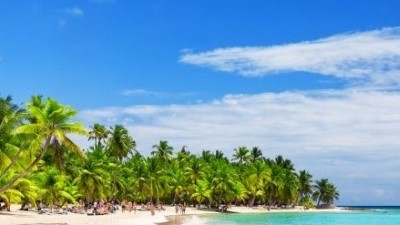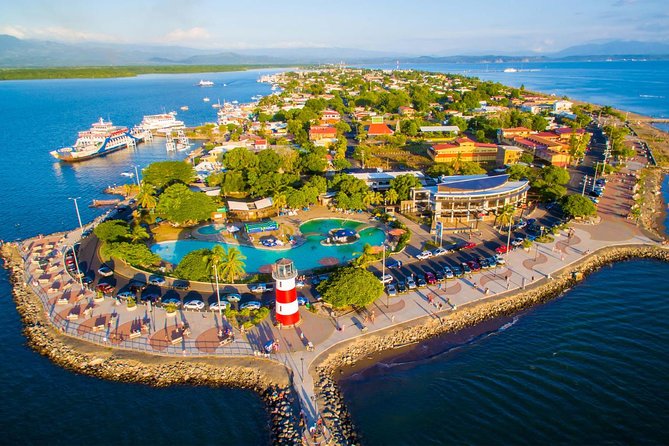AT THE COAST
There are a few important ports on the coast. Especially important for the export of fruit and coffee. Other harbor towns are faded glory.
Puerto Limon


Puerto Limon, usually referred to simply as Limon, is one of the most important port cities in the country. The city was created when the Atlantic Railroad from San Jose was built and terminated here. Workers from Africa, the Caribbean and China were brought in for the construction of the railway and settled in Limon. The city is therefore an ethnic melting pot. After the construction of the railway, many of them went to work on the banana plantations in the vicinity of the city. The city is now the fruit export port. Limon has the ambivalence that characterizes many tropical harbor towns: hard and dangerous and at the same time colorful and exotic. These properties reach their peak in October during the Carnival of Limon. The town looks picturesque with its colorful houses, but visitors should take extra care. In any case, don't go out at night. North of Limon in Moin, the largest container port in Central and South America is being built for the Dutch company APM terminals. BAM and van Oord from the Netherlands are building the terminal. The total cost of the project is nearly US$1 billion.
Puntarenas


The city is located on a narrow spit of land jutting out into the Gulf of Nicoya. Puntarenas was once Costa Rica's main port on the Pacific side. That place has been taken over by the town of Caldera, 17 km to the south. The city owes its charm mainly to the colorful wooden houses and an old-fashioned market. Furthermore, it is a messy port city. On the boulevard, the Paseo de las Turistas, there are bars and restaurants with terraces. Puntarenas is mainly a seaside resort for the Ticos. South of the city is a long beach. At the end of the headland is the mooring point for the ferries to the Nicoya Peninsula. The ferries go to Paquera and to playa Naranjo.
Quepos


Quepos was once an important banana port, the switch to the cultivation of more lucrative oil palms meant the end of the port. Today it is a small town with about 12,000 inhabitants and mainly a base for tourists on their way to Manuel Antonio Park. The romantic location of the town is perhaps the reason that French monks built a small mission there in 1570. Only foundations of the building remain. The harbor is now a marina and is now mainly used for offering fishing trips or excursions by boat to see dolphins. The city also consists of the old stilt-dwelling village of Boca Vieja, the district of the former banana barons.
Golfito


This small harbor town is about a five-hour drive from San Jose in the south of Costa Rica on the Golfo Dulce. In the past this was different. Golfito was the country's largest banana export port. In the northern part of the city you can still find many houses, which were owned by the managers of the banana company. Due to a disease among the banana plants, the banana companies left the region. After the disappearance of the banana port, the economy collapsed. To promote employment, Golfito has been converted into a tax-free zone. Many Ticos buy duty-free household appliances there. The location of the city is beautiful, on a strip of land between wooded mountains and the almost closed bay that gives access to the Golfo Dulce. Much of the area has been designated a nature reserve. From Golfito you can take a boat to the other side of the Golfo Dulce, to Puerto Jimenez. This is one of the starting points for a visit to the Corcovado National Park.


